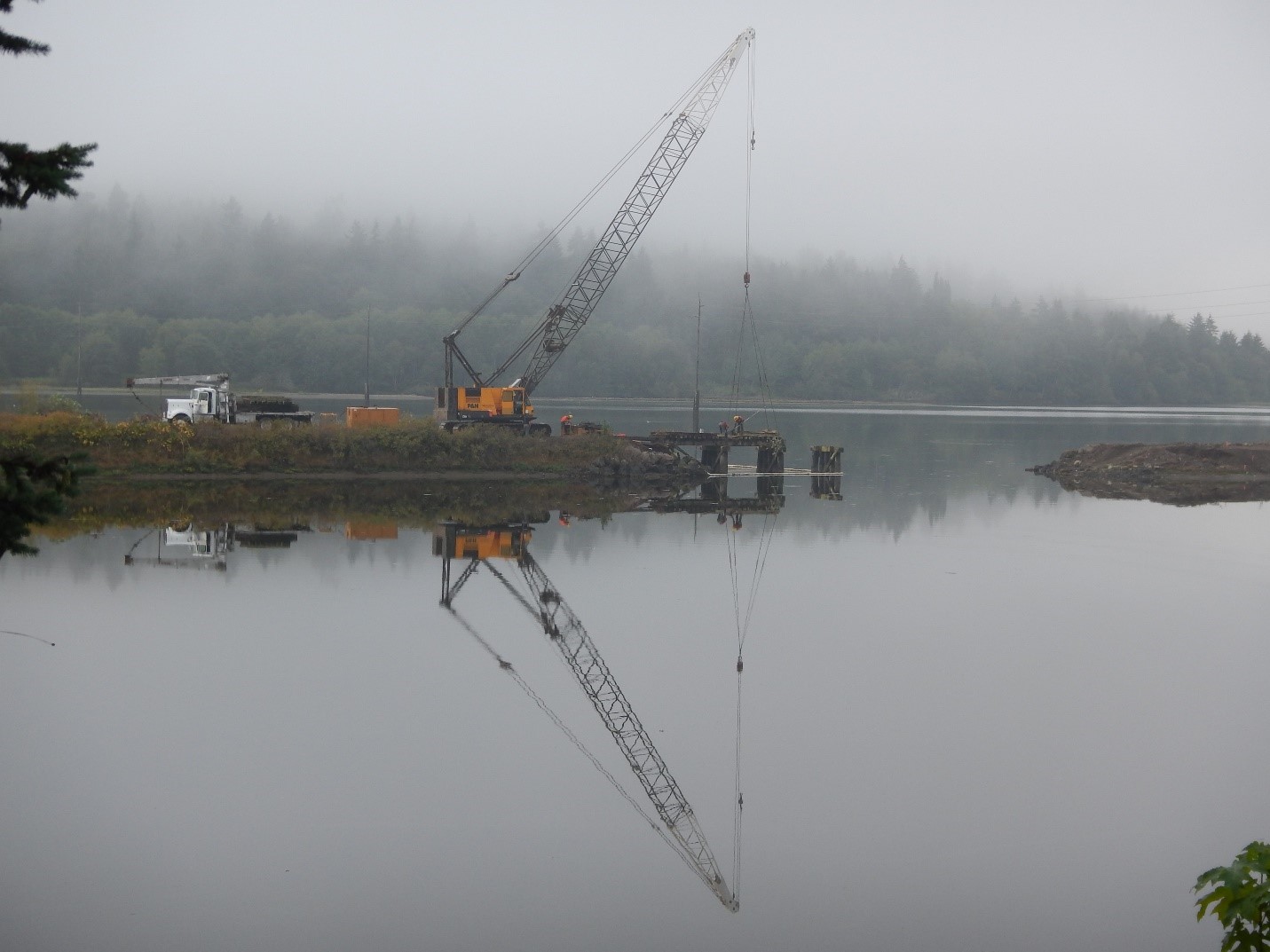Removing defunct infrastructure to protect fish and shellfish
The Maynard Nearshore Restoration Project is located at the head of Discovery Bay in Jefferson County. Salmon and Snow Creek enter the bay within a half-mile of one another forming an estuary that transitions to the bay, forming a transitional habitat for adult salmonids returning to the freshwater and for young salmon leaving to travel along the nearshore and out to the ocean. The area is rich in shellfish resources including a rare population of Olympia Oysters and a robust native littleneck clam population. The North Olympic Salmon Coalition led the restoration of this site belonging to Washington Department of Fish and Wildlife. The project removed creosoted pilings, railroad ties, an old trestle, a defunct tidegate and concrete debris leftover from historic mill and railroad. The defunct infrastructure was leaching toxic creosote, covering valuable habitat for fish, and blocking natural sediment processes. The project restored 2,800 feet of natural shoreline with gravel, gentle slopes, and native plants, and created a pocket estuary that supports juvenile salmon and forage fish including sand lance and surf smelt. Forage fish are an important food source for salmon, sea birds, marine mammals, and other wildlife. The project also built a pedestrian trail on the existing railroad grade. The Jefferson County Marine Resources Committee relocated Olympia oysters from the area before construction so they were not harmed by construction activity.
What worked:
- Restoring 2800 feet of shoreline with sand and gravel provides habitat for surf smelt and sand lance to lay their eggs.
- Sand lance spawned at the site one year after construction where no spawning had ever been documented before.
- Creating a one-acre pocket estuary increased foraging and rearing habitat for juvenile salmon.
- Restoring the nearshore habitat complemented previous restoration of the larger Snow and Salmon Creek watersheds by building connections to previously restored habitat for fish and wildlife.
- Replacing invasive vegetation with 3 acres of native plants increased shade and provided insect food for salmon
- Removing 10′ creosote trestle, 200 railroad ties and 10 creosote pilings prevented toxics from entering Puget Sound, benefiting multiple species.
Benefits:
- Out-migrating ESA listed summer chum, state listed (critical) coho, ESA listed steelhead and anadromous cutthroat trout and migrating, non-natal ESA listed Puget Sound Chinook will benefit from restored pocket estuary and improved connectivity between fresh and saltwater habitats.
- Removal of toxics from creosote pilings and creation of new habitat supports healthy populations of Olympia oysters.
- Extending the Olympic Discover Trail along the project area provides public access to the shoreline.
Location:
- Congressional District: 6
- Legislative District: 24
- WRIA: 17
- County: Jefferson
Partnerships:
- North Olympic Salmon Coalition
- Jefferson Marine Resources Committee
- Northwest Straits Foundation
- Washington Department of Fish and Wildlife
- Jamestown S’Klallam Tribe
- Jefferson County
- Moa-Tel Water Systems
- Peninsula Trails Coalition
- Point No Pont Treaty Council
- Port Gamble S’Klallam Tribe
- Washington Department of Ecology
Project Funding:
- Salmon Recovery Funding Board
- PSAR
- ESRP
- Fish America Foundation, NOAA
- Hugh and Jane Ferguson Foundation
- Jefferson County Marine Resources Committee
- USFWS
- Washington State Department of Natural Resources

